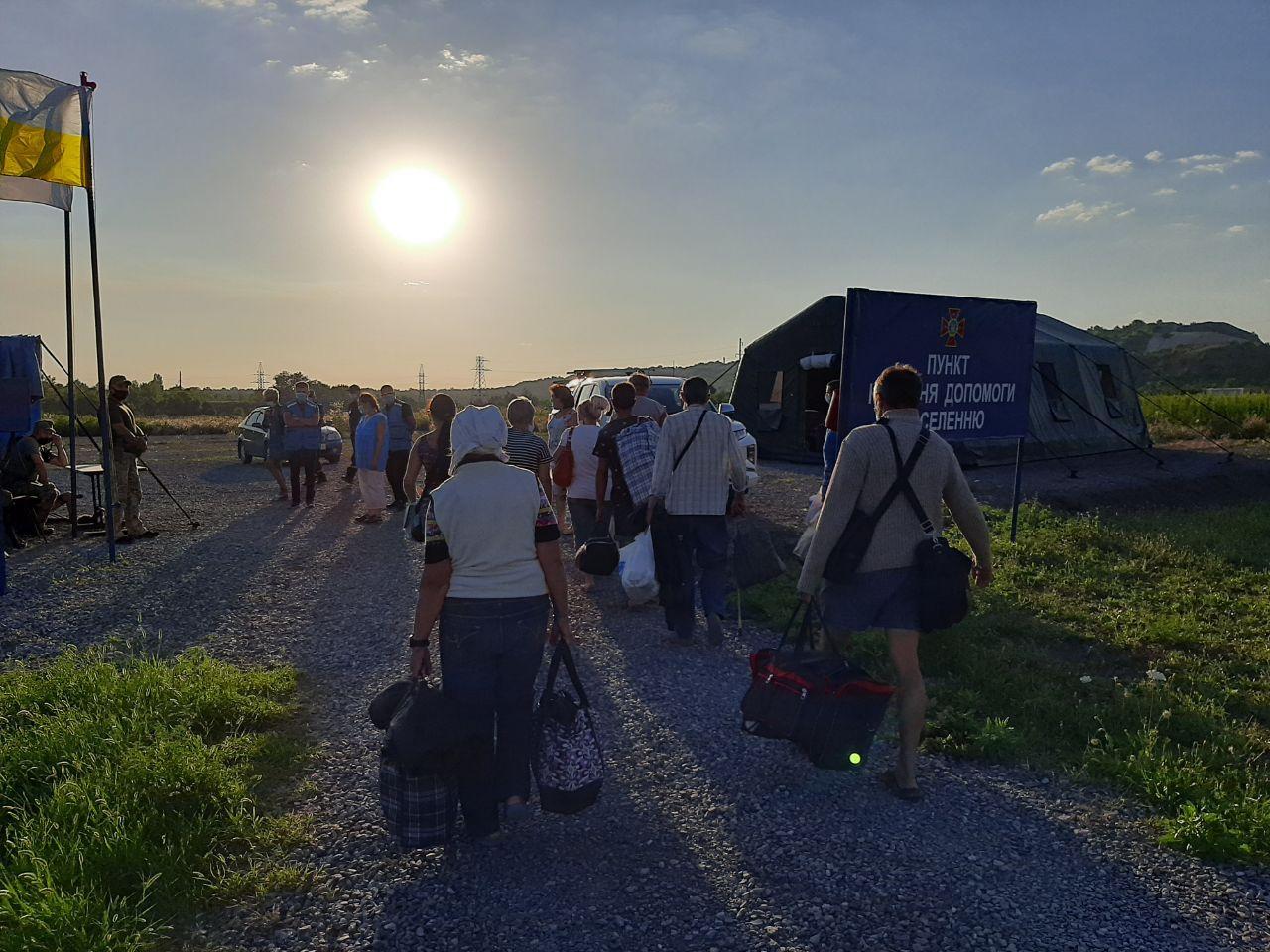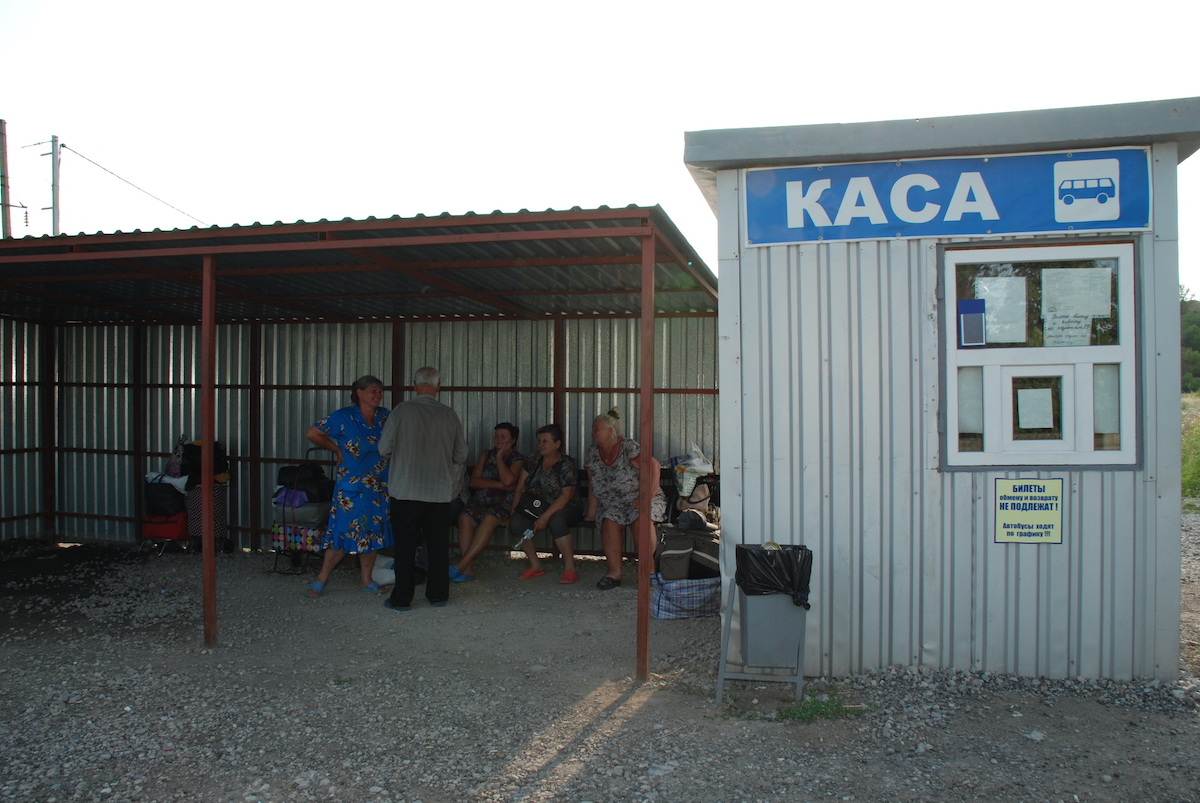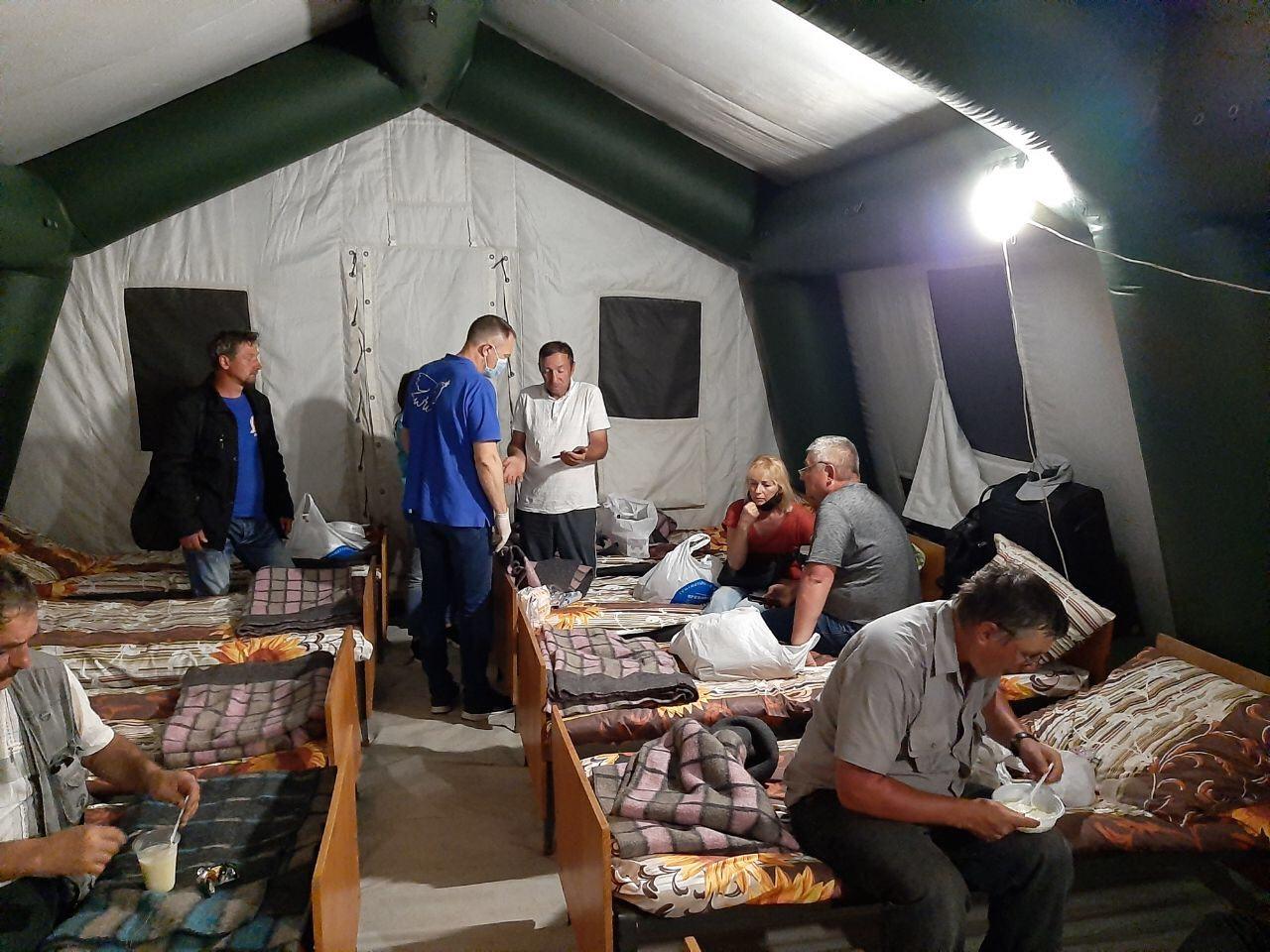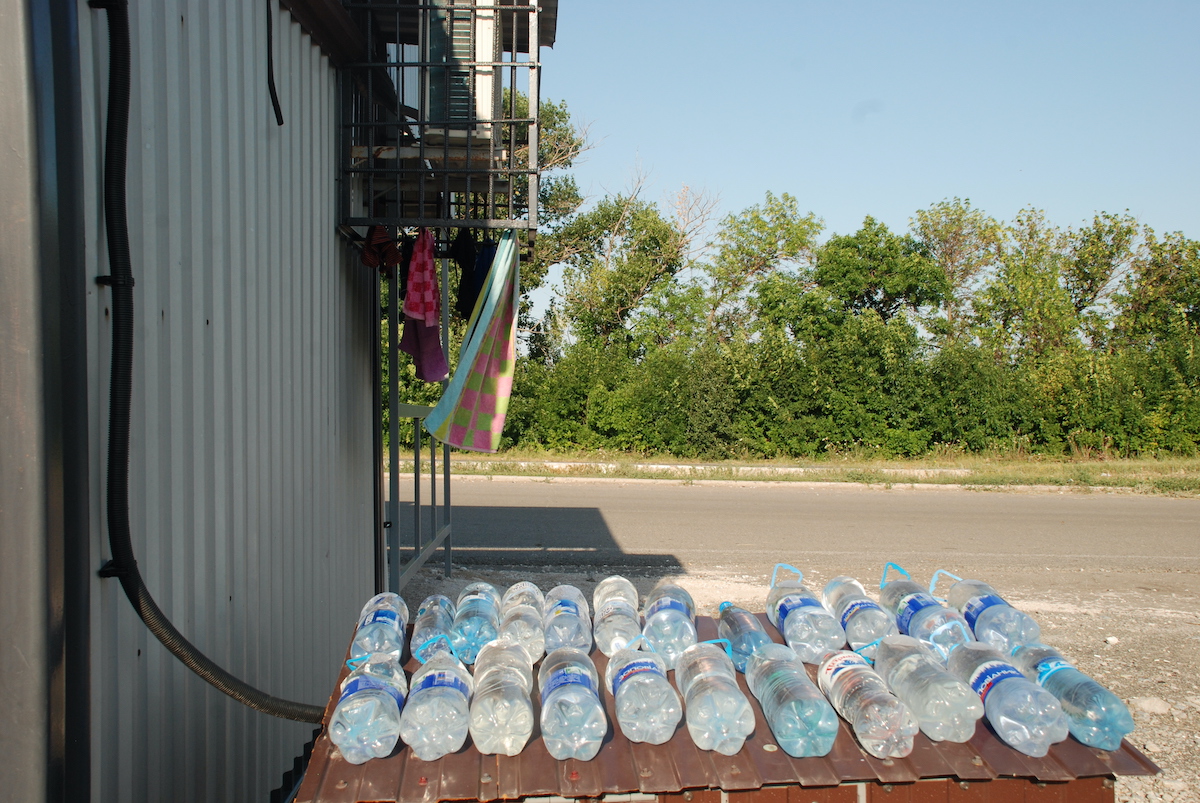Donbass and COVID-19: Divided by the virus or discrimination?
People trying to cross the contentious border in Ukraine to the disputed Donbass region are used to long lines and bureaucratic hurdles. When COVID-19 arrived, the hardships increased and were followed by accusations of discrimination.
The Entry/Exit Control Point, abbreviated as KPVV (EECP), has burst into the life of Ukrainians relatively recently. In 2014, armed conflict broke out in Luhansk and Donetsk. Pro-Russian Ukrainians, supported by Russian army men, captured administrative buildings and announced their independence from the central government and the President of Ukraine. The so-called “Luhansk People’s Republic” was established within part of the Luhansk region and the “Donetsk People’s Republic” was established within part of Donetsk region. The Ukrainian government withholds recognition from these republics, considering these territories occupied, or “temporarily occupied territories” (abbreviated TOT). For this reason, in speaking of these republics, the prefix “so-called” will be used for them, because it is the official position of Ukraine.
The Ukrainian army managed to liberate some of the occupied cities, but many settlements remain in the self-proclaimed unrecognized republics. Thus, a border appeared between them and the rest of Ukraine’s territory – the Ukrainian side calls it the demarcation line. For almost the entire line of demarcation, there are the Ukrainian military posted alongside, opposite them at different distances – the army men of the so-called republics. People who want to cross the line of demarcation can only do it via special control points.
What do such points look like, and how do they work? There is a Ukrainian control point where Ukrainian border guards check the documents of people who want to cross the contact line. Next is the gray (neutral) area. Then another control point, where the documents are further checked by representatives of the armed forces of the self-proclaimed republics. There are five fully operational control points: four in the Donetsk region and only one in Luhansk.
Prior to the quarantine, about a million people crossed the contact line every month. The reasons for doing so vary: people visiting relatives, checking property (if, for example, they moved from the so-called republics to the territory controlled by Ukraine and were forced to leave their homes), drawing up documents, and so on. Also, within TOT, the situation with medical support – and, in general, with the availability and value of goods – is more complicated, so people also cross over to have surgeries or to shop.
Sometimes, document checking takes a long time, and queues appear at the control point. Often, people have to wait in the sun or in the cold, and the elderly sometimes cannot stand the wait. According to the UN, 50 people died at the Donbass control points just in 2018.
I will share impressions from my visits to these checkpoints. The first thing to notice is a really oppressive and heavy atmosphere. People are often angry, it is unpleasant for them to wait, it is scary that there are so many people with weapons around. Many people have large shopping bags.
At the end of March 2020, all KPVV in the Donbass were closed to stop the spread of COVID-19. It was a decision made by both Ukraine and the so-called republics. The Ukrainian side sometimes let people go through control points with the special permission of the high army command. It was a lottery that not everyone could win. When the peak of virus incidences subsided a little, Ukraine decided to open the checkpoint from its side. As it turned out, the story has just began.
“The doctors promised that until I arrived, he would not go anywhere.” Stanica Luhanska.
The opening was planned on June 10. Thousands of people expected the checkpoint to resume its work after the quarantine on the Ukrainian side. There were especially many of them at the “Stanitsa Luhanska” control point; at that time, it was the only checkpoint in the Luhansk region. Natalia traveled half the country; she had to get to the control point from Kiev.
“I have a paralyzed brother in Pervomaisk. None of the relatives can help. He was taken to the hospital there. Neighbors help. I was trying to get in there. To help him. But I can’t do it,” she said.
Natalia resettled – from occupied Luhansk, she went to live in the capital of Ukraine. She couldn’t see her brother for months. Another attempt was not successful.
“The doctors promised that until I arrived, he would not go anywhere. In general, they wanted to send him to the nursing home, as a homeless person. He won’t get up any more…”
On June 10, representatives of the self-proclaimed republics had failed to open their control points. They explained that allegedly the Ukrainian side had not come to an agreement with them. Some people continued to live near the checkpoints. They hoped that the misunderstanding would quickly clear up and they would be let through. Some of them spent their last money on the way to the checkpoint, and they had nothing to pay for the way back.
Often these were people who crossed over before the quarantine began and were unable to return back to the self-proclaimed republics. They didn’t take enough money with them and didn’t expect to live for several months without work away from home. Abandoned shops or stalls became their homes, because they had nothing to pay for the rent.
After June 10, several representatives of the republic opened their checkpoint in the Luhansk region and began to let people through. But the most difficult summer was at the control points of Donetsk region.

“There are 15 people on one bench all day under the scorching sun.” Novotroitsk.
As we know, the Donetsk region has four KPVV. One of them, on the Ukrainian side, is KPVV Novotroitskaya, mirrored by the “Yelenovka” checkpoint on the so-called republic side. The Ukrainian side opened its control point in June. Representatives of the so-called “Donetsk People’s Republic” eventually agreed to let people through. Ukrainian border guards followed the standard procedure – they checked identity cards. But the authorities of the so-called DPR introduced a new rule and allowed only those people who were on their special lists. In order to get on the list, you had to send copies of your documents in advance by mail to the so-called DPR Interdepartmental Headquarters.
But not everyone knew about these lists. Or they submitted documents, but incorrectly, and were not included in the lists. Everything functioned like this: a person arrives at the Ukrainian KPVV. They let him through. He passes the neutral zone, but he is not allowed through the checkpoint of the so-called republic, because he is not on the lists. The person thinks that his documents have not yet reached the headquarters and that he is about to be added to the list and let through. The second option is that he has no money to go somewhere, and so he just stays to live near KPVV. Both adults and children did this. At first, they just sat for hours at the bus stop and even spent the night there.

“People just wanted to go home. Many went to bury loved ones, but could not say goodbye to them. The oldest woman who lived there was 82 years old. There were also children four and six years old. Sometimes even babies appeared. But we tried to somehow take them from there and place them. It’s not a place for kids. People had no hygiene products, there was no place to wash normally. The philanthropists provided them with barrels of technical water. During the day, the sun heated the water. People were washed in wooden toilets,” says Sergey Vedenin. He is a representative of the humanitarian mission Proliska, which helps the peaceful population of the frontline Donbass.
The philanthropists of Proliska supported the hostages as much as they could. They brought food, helped with documents. It’s not easy to hear, especially imagining what was going on there in these summer days: heat, smell, unsanitary conditions…

Later, the Ukrainian side set up tents where people could spend the night. The “stuck at the KPVV” spent the night in tents, which were installed by Ukrainian rescuers. There were a half dozen people there.

“Already at 6:00 am, people were at the stop. And they sat/stood there under the scorching sun. The usual stop for transport with a canopy, was a bench of just three meters. These 15 people spent all day there. Since a tent could not be set up during the day, this is the territory of KPVV, they were allowed only after 6:30 pm. The maximum that people lived in such conditions was for a month and a half. Birthdays were celebrated there, a wedding anniversary, everything happened,” Sergey recalls.

It lasted overall about three months. In September, the local authorities found a solution, and people began to be sent to a nearby settlement. Tests for COVID-19 became another stumbling block.
Take the test... if you have money
In addition to the open and closed checkpoints, the pandemic has complicated the process of crossing the demarcation line. People who follow from a temporarily occupied territory must either undergo a two-week self-isolation or take a test for COVID-19 and provide a negative result. And each of these options can be a problem.
What’s wrong with the tests? Basically, nothing. If we do not take into account the fact that people are mostly forced pay about US $45.00 to take them. For many retirees, this is about a third of their monthly income.
With self-isolation, the story is even more interesting. For example, there are no special places for this in the Luhansk region. So people need to rent a space for these 14 days, which will probably cost more than the test.
Safety or discrimination?
In any case, when trying to cross the line of demarcation on the KPVV, all adults installed on their smartphone a special application for self-isolation: Diya. With its help, the police can check several times a day whether a person leaves his home, while violating the conditions of being under observation. For those who decide not to wait two weeks and take the test, the result is automatically transferred to the application. If a person fails to answer within 15 minutes, he/she can be considered a violator and the police squad could be sent.
If a person does not want to wait, he takes the test in a certified laboratory. For example, in Stanytsia Luhanska, this can be done right next to the checkpoint. The result is automatically transferred to the application. If it is negative, the person can leave the place of self-isolation and is no longer controlled.
It was this application that caused controversy and debate, including discrimination against the inhabitants of the occupied territories. The fact is that in July 2020, the mandatory self-isolation for those who arrived from other countries had been abolished. But it remained for the inhabitants of the temporarily occupied territories. This decision was made by the Ukrainian military command (the occupation of part of the territories led to a military conflict, Ukraine now calls efforts to resolve it Operation Joint Forces, or THEO), which is subordinated, including representatives of the border service, who work for the KPVV.
This outraged representatives of public organizations that help people in frontline areas. They wrote to the Prime Minister of Ukraine and the commander of the Joint Forces Operation, pointing out that “the situation in which the Commander of the SOE ‘clarifies’ the regulations of the Cabinet of Ministers of Ukraine in such a way that they stop working in certain parts, contradicts the Constitution and laws of Ukraine.”
“This decision violates the right of people to freedom of movement, which is guaranteed by the Constitution, as well as all the rights that are associated with it,” explains Danil Popkov, a lawyer at the Vostok-SOS charitable foundation.
Discrimination on the basis of property could also be noted. After all, to install the application, you need a smartphone, and for many pensioners who cross the line of demarcation, it simply does not exist. In addition, older people are not finding it easy to deal with the work necessary for the application. Scammers did not fail to take advantage of the difficulties people were having. Some scammers offered to install Diya for money or just sell a smartphone on which the right program is installed. There were cases when gold jewelry was exchanged for a phone.
The situation also garnered reactions outside Ukraine. The UN monitoring mission also considers the requirement to install the Diya application for people crossing entry and exit checkpoints in the Donbass discriminatory. This was stated at the briefing by the head of the UN Monitoring Mission on Human Rights in Ukraine, Matilda Bogner.
“People who entered government-controlled territory had to install the Diya app, which was essentially discrimination against people who couldn’t afford smartphones,” Bogner said.
An endless story
Autumn 2020. A new outbreak of morbidity and newly closed KPVV checkpoints. If you stand near the closed checkpoint with its paramilitary aesthetic and buildings that were erected somewhat chaotically, as if in a hurry, the unusual silence here becomes uncomfortable. I want to write a cliche of “ringing in my ears,” but this feeling is deeper. One thinks about how many people remain torn apart, helpless, like ants that cruel children scattered from their anthill for the sake of laughter. How many hugs will not happen, how many lips will not say important words, how many fading eyes will not look at children and grandchildren for the last time. How many lives are getting shorter right now because of unfinished or uncoated scarce drugs that have remained there, beyond the demarcation line. For some reason, this brings to mind how, on one of the summer days, the occupation authorities did not let people into their territory, but allowed them to carry a bright blue coffin. It’s probably easier to be dead here than it is for the living. It’s always easier.
Photos for the article were provided by the staff of the humanitarian mission Proliska. The photos were taken in the summer of 2020.